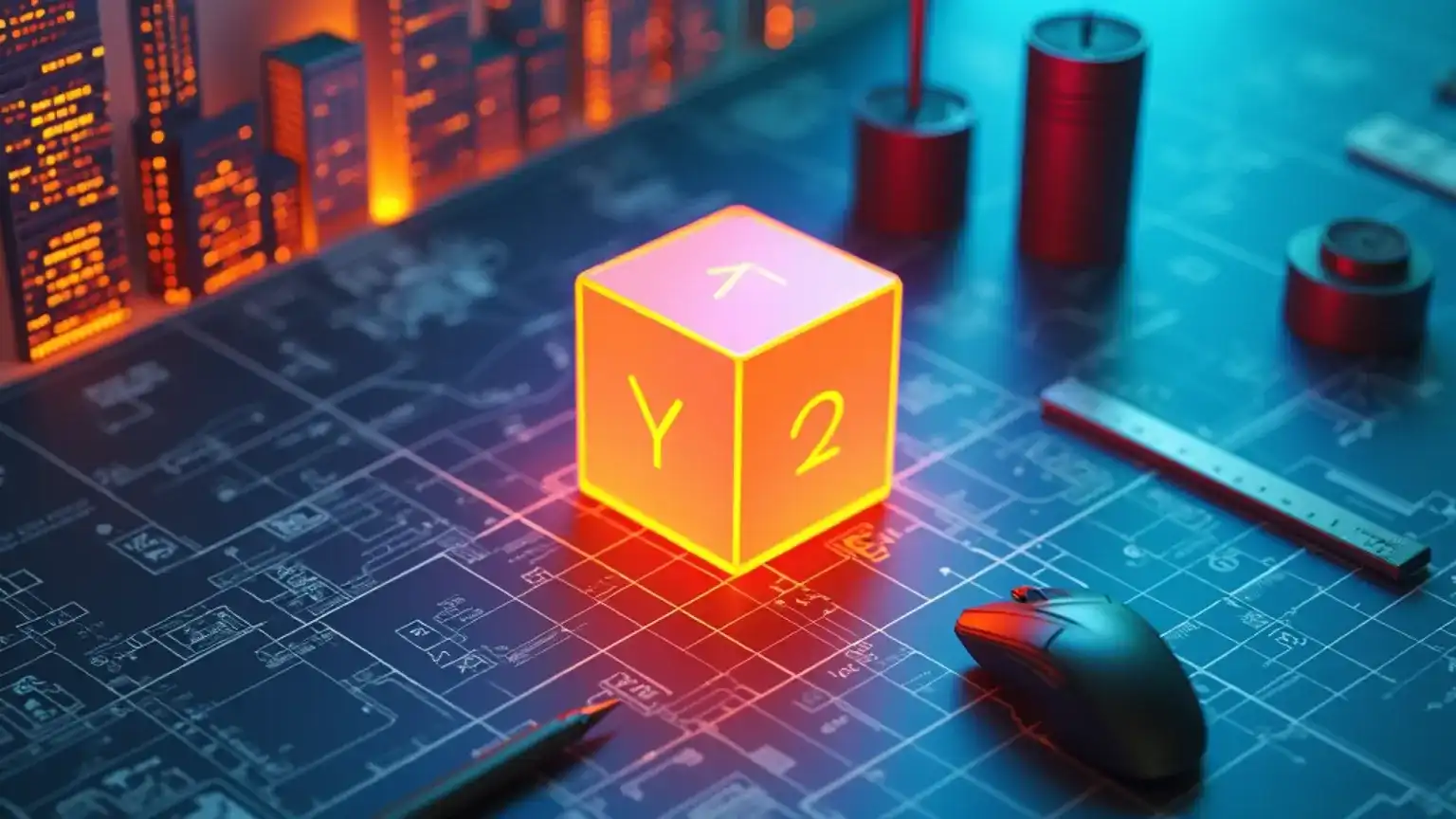Introduction
Isometric drawings are a fundamental concept in design, engineering, and architecture. They provide a 3D representation of objects on a 2D plane using a fixed angle, making them essential for technical illustrations, game design, and product visualization.

What Is an Isometric Drawing?
An isometric drawing is a 3D representation of an object on a 2D surface where all three axes (length, width, and height) are equally foreshortened (typically at 120° angles). Unlike perspective drawings, isometric projections maintain uniform scale, making them ideal for technical and engineering designs.
Key Features of Isometric Drawings:
✅ No vanishing points – Unlike perspective drawings, lines remain parallel.
✅ Equal scaling – All dimensions are proportionally accurate.
✅ 30° angle rule – Vertical lines stay straight, while horizontal lines are drawn at 30°.
✅ No distortion – Objects retain their true proportions.
✅ Fixed axis alignment – X, Y, and Z axes are equally inclined (usually 120° apart).

Examples of Isometric Drawings in Various Fields
1. Engineering & Architecture
Engineers use isometric drawings to illustrate machine parts, pipelines, and structural designs. Architects use them for building layouts and interior designs.
- Used for piping diagrams, mechanical assemblies, and structural blueprints.
- Helps visualize electrical circuits, HVAC systems, and construction layouts.
- Common in exploded-view diagrams for assembly instructions.

2. Video Game Design
Many classic and modern games (like SimCity and Monument Valley) use isometric art for a pseudo-3D effect.
- Classic games like SimCity, Diablo, and Age of Empires used isometric views.
- Modern indie games (Monument Valley, Bastion) use stylized isometric art.
- Popular in strategy, RPG, and simulation games for a pseudo-3D look.

3. Product Design & Prototyping
Industrial designers create isometric sketches of products before manufacturing.
- Industrial designers sketch consumer electronics, furniture, and vehicles in isometric view.
- Used in patent drawings to showcase inventions clearly.
- Helps in 3D printing and CAD modeling before final production.

4. Infographics & Data Visualization
Isometric illustrations make complex data more engaging.
- Makes complex data (e.g., city planning, network structures) more digestible.
- Used in business presentations, UX/UI wireframes, and instructional manuals.
- Enhances marketing visuals for tech products and architectural projects.

Benefits of Isometric Drawings
🔹 Clear Communication – Easier to understand than complex perspective drawings.
🔹 Accurate Measurements – Maintains proportions for precise scaling.
🔹 Simplified Visualization – Helps in prototyping without 3D software.
🔹 Faster Drafting – No need for vanishing point calculations.
🔹 Versatility – Used in engineering, gaming, UX/UI design, and more.

Isometric vs. Perspective vs. Orthographic Drawings
| Type | Key Feature | Best Used For |
|---|---|---|
| Isometric | Fixed 30° angles, no vanishing points | Technical diagrams, game design |
| Perspective | Realistic depth with vanishing points | Art, architectural visualization |
| Orthographic | 2D flat views (front, top, side) | Engineering blueprints |

When to Use Each Type?
- Isometric: Best for technical clarity, schematics, and game art.
- Perspective: Ideal for realistic renders, animations, and concept art.
- Orthographic: Essential for manufacturing, machining, and CAD modeling.
How to Create Isometric Drawings?
Manual Techniques
- Use isometric grid paper for hand-drawn sketches.
- Follow the 30° angle rule for horizontal lines.
- Apply proper scaling to maintain proportions.
Digital Tools for Isometric Design
- Vector Graphics: Adobe Illustrator, Inkscape, CorelDRAW.
- CAD Software: AutoCAD, Fusion 360, SolidWorks.
- 3D Modeling: Blender, SketchUp, Revit.
- Game Design: Unity (for isometric tilemaps), Tiled (for level design).
Common Mistakes to Avoid
❌ Incorrect axis angles (must be 120° apart).
❌ Uneven scaling (distorts the object).
❌ Overcomplicating details (isometric is best for simplicity).
❌ Ignoring layer organization (important in digital drafting).
Future of Isometric Drawings
- Increasing use in VR/AR environments for schematic visualization.
- AI-powered tools automating isometric conversions from 3D models.
- Growing demand in UI/UX design for app and web interfaces.
Conclusion
Isometric drawings are a powerful tool for designers, engineers, and artists. They simplify complex 3D structures into easy-to-understand 2D representations while maintaining accuracy. Whether in gaming, product design, or architecture, isometric projections play a crucial role in visualization.

Want to create your own isometric designs? Try tools like Adobe Illustrator, AutoCAD, or Blender for professional results!



1 thought on “What Is an Isometric Drawing? Definition, Examples, and Benefits!”